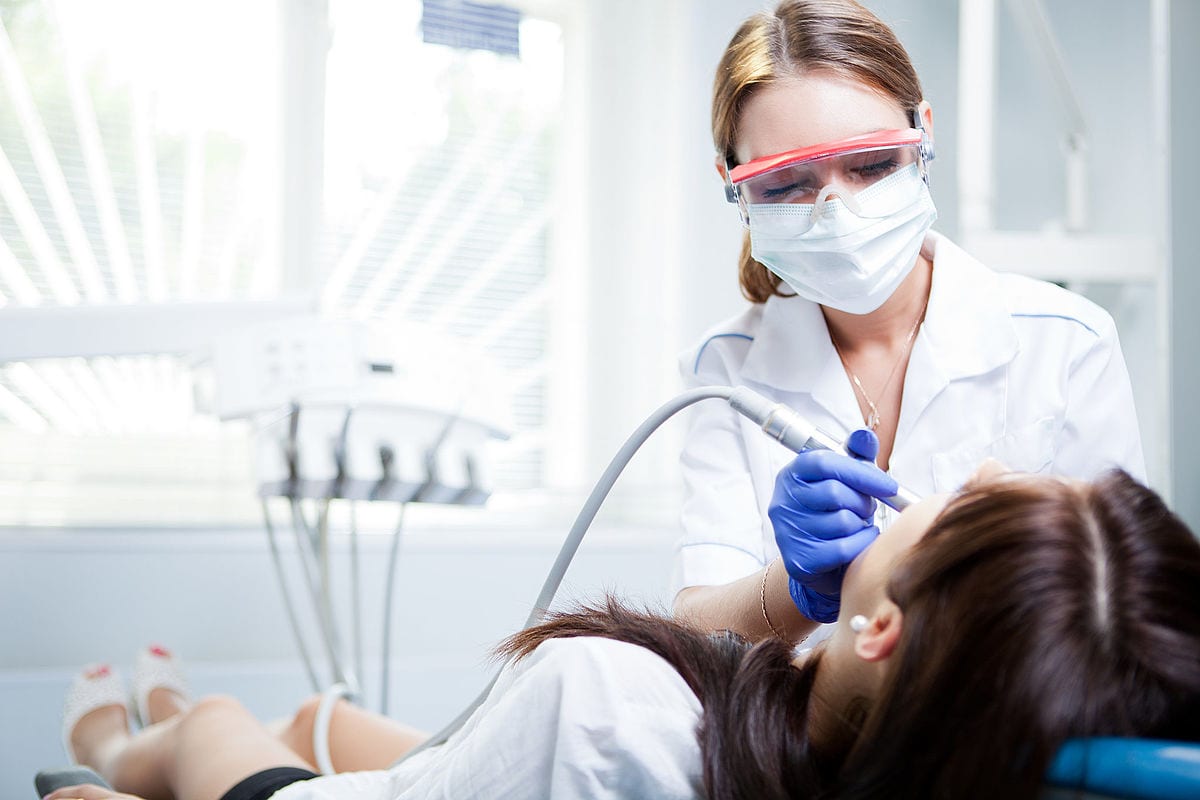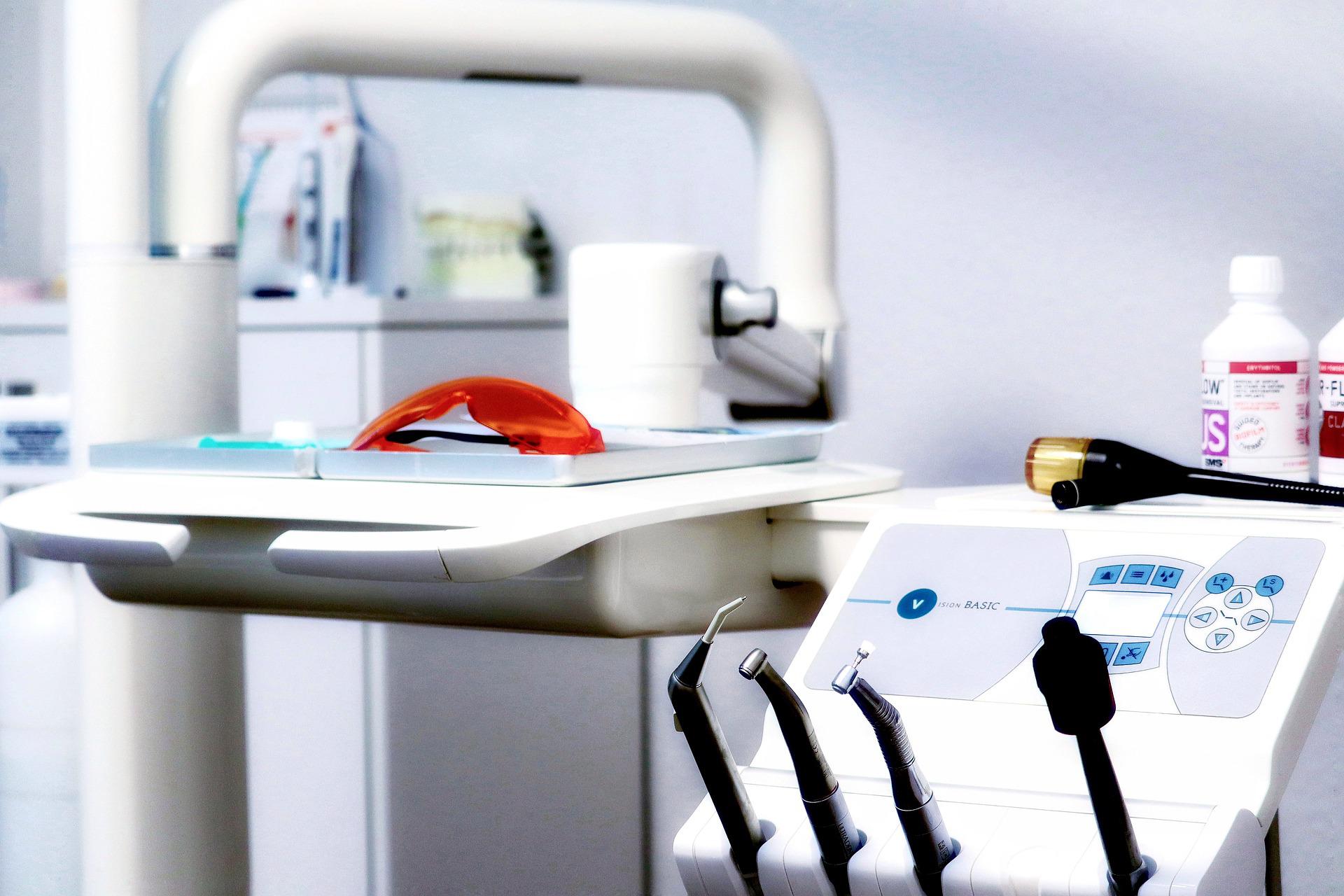
Dental Hygienist Poland
A dental hygienist or oral hygienist is a licensed dental professional, registered with a dental association or regulatory body within their country of practice. In Poland, that is The Polish Academy for Dental Prophylaxis.
Once registered, hygienists are primary healthcare professionals who work independently of or alongside dentists and other dental professionals to provide full oral health care. They have the training and education that focus on and specialise in the prevention and treatment of many oral diseases. They play a vital role in maintaining healthy teeth and gums.
One of the primary responsibilities of a dental hygienist is to conduct thorough teeth cleanings, including removing plaque and tartar from teeth and gum lines. They use specialised tools to scrape and clean teeth, and they also provide instructions to patients on how to properly brush and floss to maintain good oral health.

In addition to cleanings, dental hygienists also perform oral health assessments and assist with dental procedures. They may take X-rays, conduct screenings for oral cancer, and provide fluoride treatments to help prevent tooth decay. Dental hygienists can also apply sealants to teeth to help prevent cavities, and they can provide recommendations for over-the-counter dental products that can help patients maintain good oral health at home.
Another critical role of dental hygienists is educating patients on the importance of good oral hygiene practices. They work with patients to develop a personalised oral care routine and offer guidance on proper brushing and flossing techniques. Dental hygienists can also provide information on how to prevent dental problems, such as gum disease and cavities.
Dental hygienists work in a variety of settings, including dental offices, hospitals, schools, and public health clinics. They are licensed professionals, and they must complete a rigorous educational program before becoming certified. In addition to their academic qualifications, dental hygienists must also stay up-to-date with the latest techniques and advancements in dental care.
Dental hygienists have a specific scope of clinical procedures they provide to their patients. They assess a patient’s condition in order to offer patient-specific preventive and educational services to promote and maintain good oral health.
Periodontal therapy
A major role of a dental hygienist is to perform periodontal therapy which includes things such periodontal charting, periodontal debridement (scaling and root planing), prophylaxis (preventing disease) or periodontal maintenance procedures for patients with periodontal disease.
Dental hygienists work in a range of dental settings, from independent, private, or specialist practices to the public sector. Dental hygienists work together with dentists, dental therapists, oral health therapists as well as other dental professionals.
Hygienists aim to work inter-professionally to provide holistic oral health care in the best interest of their patient. Dental hygienists also offer expertise in their field and can provide a dental hygiene diagnosis, which is an integral component of the comprehensive dental diagnosis.
Services
In the dental office, the dentist and the dental hygienist work together to meet the oral health needs of patients. Some of the services provided by dental hygienists may include:
- patient screening procedures, such as assessment of oral health conditions, review of the health history, oral cancer screening, head and neck inspection, dental charting and taking blood pressure and pulse
- taking and developing dental radiographs (x-rays)
- removing calculus and plaque (hard and soft deposits) from all surfaces of the teeth
- applying preventive materials to the teeth (e.g., sealants and fluorides)
- teaching patients’ appropriate oral hygiene strategies to maintain oral health
- counselling patients about good nutrition and its impact on oral health
- making impressions of patients’ teeth for study casts (models of teeth used by dentists to evaluate patient treatment needs)
- performing documentation and office management activities
Periodontal Treatment
Gum disease is caused by a sticky film of bacteria called plaque. Plaque is always forming on teeth, but if they aren’t cleaned well, the bacteria in plaque can cause gums to become inflamed. When this happens, the gums pull away from the teeth and form spaces called pockets.
Plaque then gets trapped in these pockets and cannot be removed with regular brushing. Untreated gum disease can lead to bone and tooth loss. If the periodontal pockets are too deep a deep cleaning (scaling and root planing) is necessary to remove the plaque in these pockets.
Scaling and root planing is a careful cleaning of the root surfaces to remove plaque and calculus from deep periodontal pockets and to smooth the tooth root to remove bacterial toxins. Scaling and root planing is sometimes followed by adjunctive therapy such as local delivery antimicrobials, systemic antibiotics, and host modulation, as needed on a case-by-case basis.
Most periodontists agree that after scaling and root planing, many patients do not require any further active treatment. However, the majority of patients will require ongoing maintenance therapy to sustain health. The maintenance phase involves continuous care, at patient specific levels.
In conclusion, dental hygienists play an essential role in maintaining good oral health. They work closely with dentists to provide a comprehensive approach to dental care, from cleanings to preventative treatments and education. By working with a dental hygienist, patients can develop healthy oral care habits and prevent dental problems for a lifetime of healthy teeth and gums.